Fresh Batch #81: The Ancient Etruscan Mystery Solved
Addressing Uralic Languages and the Claim that Etruscans are an Urgo-Finnish race originating in Russia
Before we begin, it’s important to make it clear that I agree with the likelihood of cultural diffusion between northern and southern European cultures. If you’re looking for the origins of humanity, I don’t have the answer, but I can help you discover the origins of the systems of civilization, language, and priestcraft throughout the history we have available. Speculating on older cultures that are alleged to have existed previously than what we have available as evidence but yield no artifacts, such as Atlantis, is a fruitless endeavor for me. This article is dedicated to Jules Martha, for endeavoring to find the origins of the Etruscans, and to Dr. Narco Longo for attempting to prove the Phoenicians originated in Finland.
I concede that the Celtic-Scandinavian phenotype is present in the Finnish and the Etrusco-Phoenician cultures, and that they are likely descendants of the same culture or region. According to Sammes, the Galatæ and Celtæ (Gauls) were named after their blonde hair, from the Phoenician Chalath, Chalta, or Chelta, meaning yellow or saffron colored. Aesar is the Etruscan word for God (equivalent to the Latin Deus), spelled Aisar by Suetonius, which is the Greek spelling found in their rendering of Caesar (Kaisar), which is the origin of Kaiser, the German word for Emperor. One sees this diffusion flowing from Italy, not from the north or east into Italy. According to Ancestry, “It (Caesar) gave rise to vocabulary words meaning emperor or ruler in German (Kaiser), Russian (tsar), Czech (císař), Slovak (cisár), Slovenian (cesar), Hungarian (császár), Arabic (qayṣar) and other languages.”
As you can see, Slovenian is almost one for one because they are obvious ancient Italians, proven by the Negau Inscriptions that they thought were the oldest Germanic Runes, which turned out to be North Etruscan proper, preceding the formation of the Runic alphabet. Michael Grant wrote (The Etruscans, p. 215), “When the oldest Etruscan inscriptions in this northern region appear in about 530 BC, they are seen to employ the form of alphabet that prevailed at Clusium, and by the beginning of the following century this had spread right up to Venetia in the north-east, becoming the foundation of the Venetic, Illyrian and Raetian alphabets, and the basis, too, of German and Scandinavian runes.”
On one of the helmets (Negau B), there is an inscription in a northern Etruscan alphabet. The date of the inscription is unclear, but it may be as old as 350–300 BC (Teržan 2012). It is read as:
𐌇𐌀𐌓𐌉𐌙𐌀𐌔𐌕𐌉𐌕𐌄𐌉𐌅𐌀///𐌉𐌐
harichastiteiva\ip
Many interpretations of the inscription have been proffered in the past, but the most recent interpretation is by Tom Markey (2001), who reads the inscription as Harichasti teiva, Harigast the priest (from teiwaz; god), as another inscribed helmet also found at the site bears several names (mostly Celtic) followed by religious titles.
However, I see Hari-Chasti-teiva, which looks like Holy/Savior-Christ/Krishna-Deva/God/Shining. Its all one word with no breaks as far as I can see. The 𐌙 functions like CH (the letter chi in Greek), pronounced like a K as in Christ. But in Hebrew its the letter chet, which functions like a guttural H, so it could be Hasti. Recall the ST and T being interchangeable, i.e. Christo/Chrisos, remnants of which we still see and hear today in words like listen, mistle-toe, and Christmas.
Tve (תבה), Tiva (תיבה), teiva means an ark, a basket, a box, a coffin, or a casket, and, according to Wiki, is cognate with Arabic تَابُوت (tābūt). It was a merger of Egyptian words that meant sarcophagus, coffin and chest, box. It’s also seen in the Coptic taibe (recall the interchangeability of V and B), which is a chest or coffin. So perhaps this inscription was more like tongue-in-cheek way of conveying that the helmet was a coffin for the Holy Hasti, which could be Hati, meaning he who hates, ascribed to a wolf in Norse mythology, which reminds me of the Etruscan Aita (another epithet for Suri, from which Surtr comes).
The wolf is sacred to Mars and Apollo, Gods of War, if you will, so this inscription could allude to a warrior for Mars, who, if slain on the battlefield, will rest in a sarcophagus of his own armor.
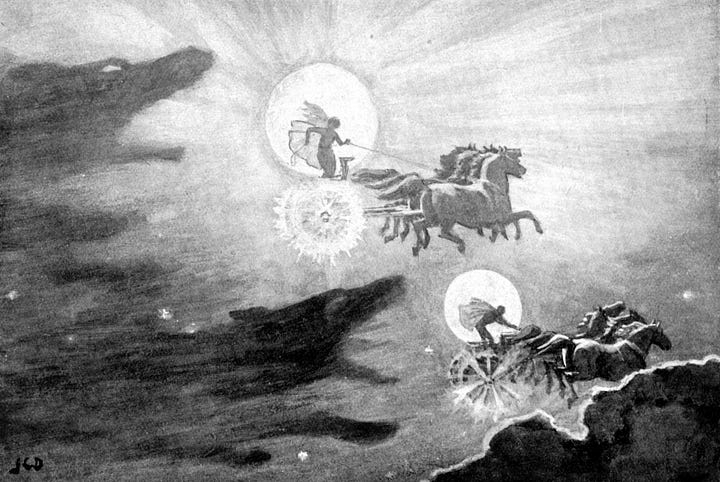

But Chasti could also be an older form of the Latin castus, meaning pure, cut-off, or separate, which may allude to Castur/Castor, of the brothers Gemini. From here, there are a ton of arrangements of these meanings you can play with, but I’ve digressed too much. The point is that the inscriptions in armor found in Slovenia that were thought to be the earliest forms of the runic alphabet were clearly Etruscan (Italian) inscriptions. I don’t need to provide a citation or appeal to an authority because I can read it, and that’s the power you will acquire from doing the work in Spirit Whirled.
Were the Etruscans from Russia, Aesar would’ve meant God to the Russians, like it did to the Italians and the Irish, and even the Norse. It is also worth noting that Suetonius, though a Roman, was born in Numidia (his birthplace is disputed), which is modern Algeria, and Numidians are the people referred to as Berbers, whose language was also a form of Phoenician, or Punic (Sicilian-Phoenician). North Africa was an extension of Europe and the Etrusco-Phoenician empire, inherited or taken over by Rome. The ancient Mauri are not Subsaharan or Arabic people. The Arabs don’t get to those regions till the 7th century AD. The Strait of Gibraltar was referred to as the Pillars of Hercules back then, Hercle being an Etruscan deity, likely from the Phoenician Ogmios/Ogmius from which the Irish take their Ogham. This history is currently being hijacked by people referring to themselves as Moors, but it’ll fail miserably because shepherds and bushmen don’t have history of building sea-worthy vessels or megalithic temples, and even the most surface-level amount of research demonstrates that.
As a reminder, the men in the following black and white photographs are products of the Caesar and Conti families, maintaining the Caesar name (De Cesare in Italian; though an Etrusco-Roman family, these members were in Sicily prior to coming to America). The Patriarch, though an old man in this photo, had blonde hair and blue eyes. The one sitting down is my 2nd Great Grandfather with one of his sons standing behind him. The Caesar/Conti line, along with another Venetian family (Fortini), produced my maternal Grandmother, who was the last one born with the Caesar name in my branch (Italian family names are unique in that they have many variations depending on region, so the same family will have slightly different spellings and pronunciations of their name based on where they live). These are members of some of the oldest Italian families, and as you can see, they look Celtic/Germanic. This is because the Central European phenotype is indigenous to Italy, as archaeology has proven thus far. Were it to originate elsewhere, it’d be from a time archaeologists don’t have access to. The painting is of Lotario dei Conti di Segni (anglicized as Lothar of Segni), the head of the Catholic Church and ruler of the Papal States from January 8, 1198 until his death on July 16, 1216 (according to Wiki). He was Pope Innocent the III, born in Gavignano, a town in the Metropolitan City of Rome, Lazio, central Italy. Gavignano is approximately 50 km south east of Rome, on a hill in the Lepini Mountains. Lazio was formerly Etruria. The last image is a family crest from the Venetian family of the wife of the Elder Caesar in this photo.
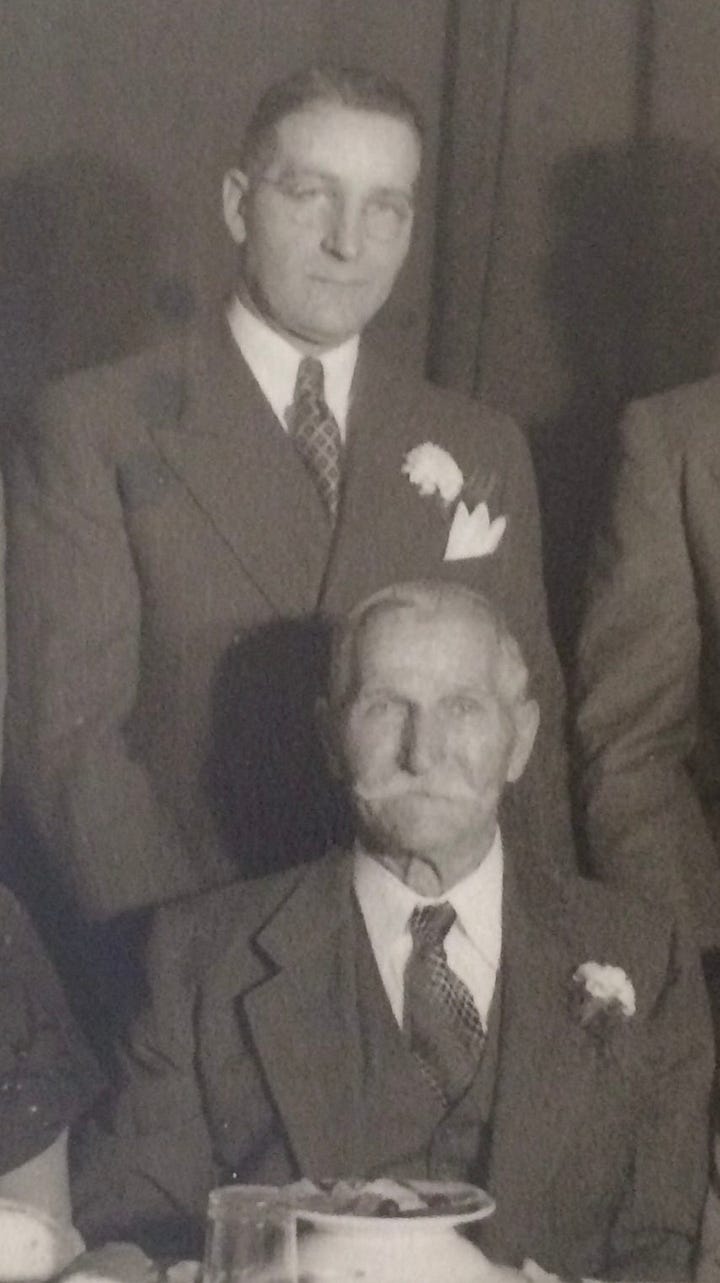
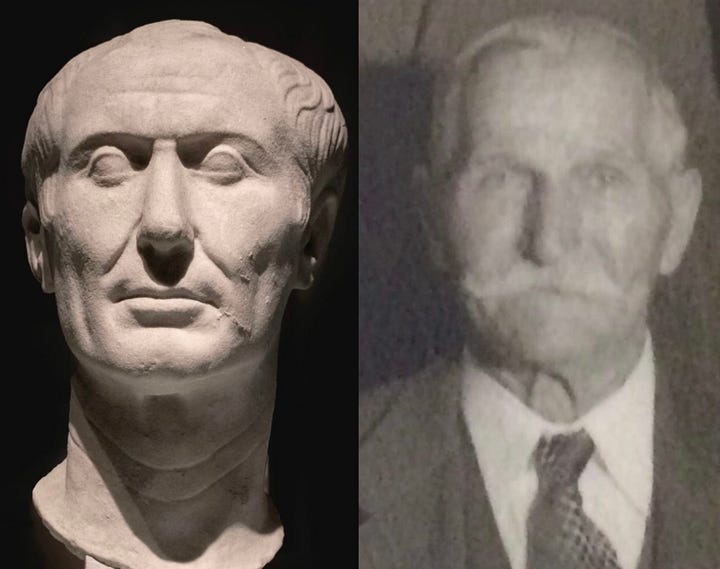
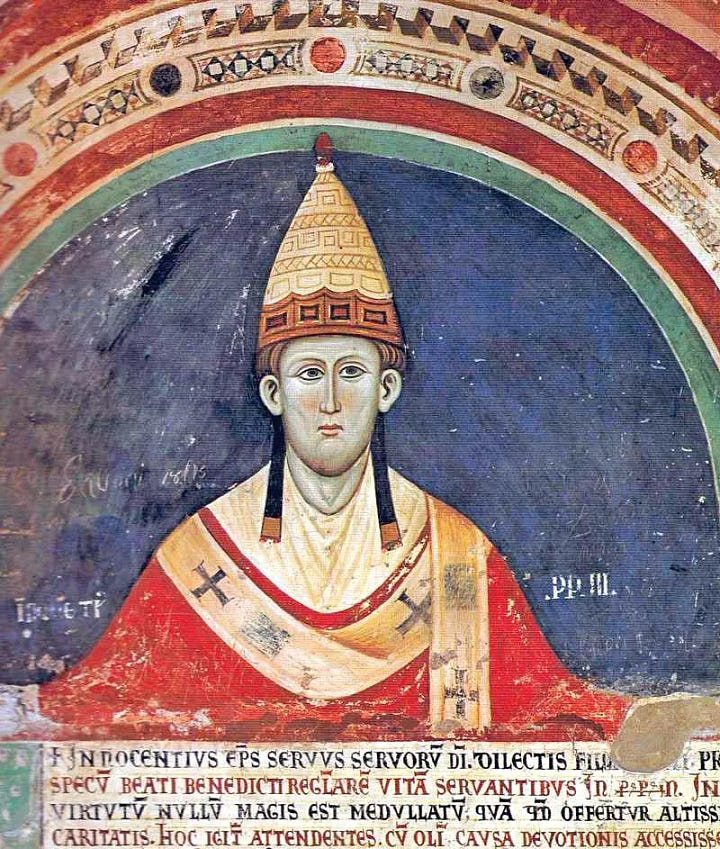
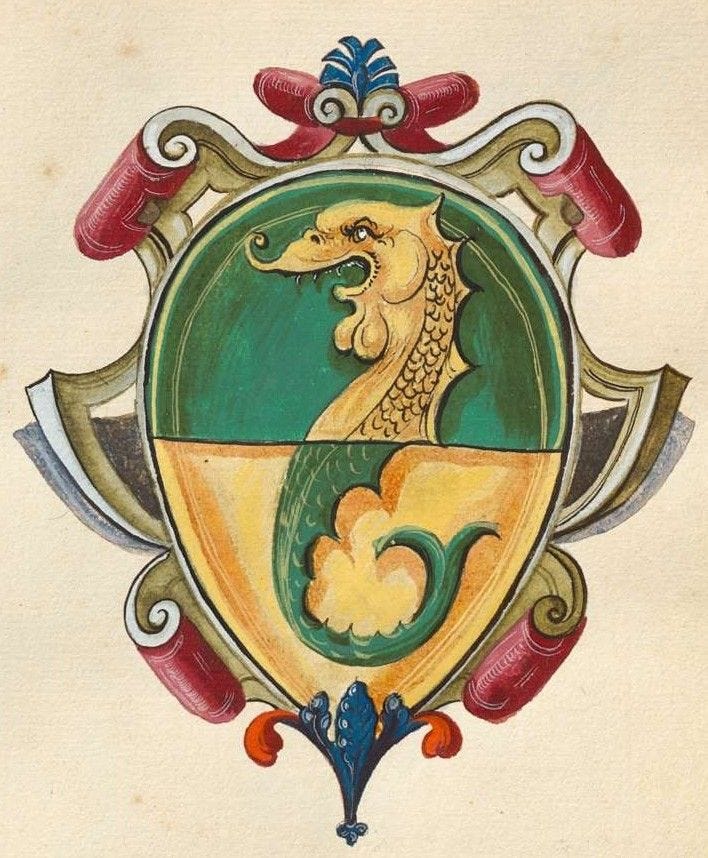
There are no ancient manuscripts left written in the Irish Language, which is a tragedy because their letters mirror the Etruso-Phoenician alphabet at the time the 17-letter version was given to the Greeks. Their lands were strewn with Phoenician artifacts and their word for God was also Aesar. The oldest surviving Irish manuscripts written in Irish letters are written in the Latin language. After the ancient Britons peopled the Scandinavian lands, we see this word show up in the form of the Æsir, the Norse pantheon. Great resources on the Etruscans and ancient Italy would be The Etruscans by Michael Grant and Murlo and the Etruscans, which is a collection of research papers. They’ll show you how subtleties like urnfield culture, tomb paintings, certain pottery, and other nuances prove to originate in Italy.
So when I expose the system of priestcraft that has controlled civilization, in my series Spirit Whirled, no one has gone against his own kind more than I. However, I am of the opinion that at one point the system was beneficial to mankind and brought the order necessary for the civilization that so many of us enjoy the convenience of today. Prior to that, it was likely another system of perversion and abuse. I do this work for the benefit of all. I’m on a mission to figure out the origin of the system of priestcraft that we’re subjected to that has existed in some form for over 5,000 years, and quite possibly older, as well as the cultural diffusion it is responsible for, and I can only work with what is available in the archaeological records. It does not invalidate any of your ideas about the history of the world beyond what I present, but rather this will help you set boundaries on your speculative endeavors so as not to waste your time thinking about scenarios that couldn’t have happened.
I learned about this article on Old World Florida’s live stream. Dr. Longo is currently of the opinion that the Phoenicians came from Finland while the other gentleman is under the impression they are not an ethnicity. I am of the opinion that their origins are an ethnicity indigenous to Italy and the change in phenotypes is a result of the maritime progress the Phoenicians made to enable world access to those granted passage on the ships. Unfortunately, the streams were taken down after this post. I’m not sure what the reason was. Feel free to reach out and ask them to be put back. Perhaps something was said that the algorithms didn’t like. I was not notified as to why and I don’t really care enough to find out.
Here’s the zoomed-in version of the text of The Ancient Etruscan Mystery Solved:


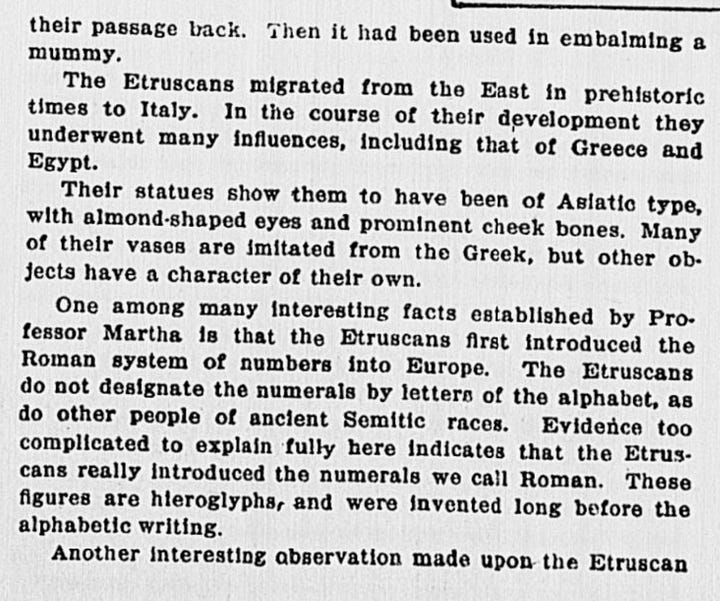

We’ve covered the mummy wrappings that are the subject of the article in previous posts, as well on a live stream I did with Old World Florida.
The wrappings are also known as Liber Linteus Zagrabiensis.
According to Wiki, the first plausible mention of a people speaking a Uralic language is in Tacitus’s Germania (c. 98 AD), mentioning the Fenni (usually interpreted as referring to the Sami) and two other possibly Uralic tribes living in the farthest reaches of Scandinavia.
This is almost one for one the Irish term for Phoenician: Fenian. According to O’Reilly’s Irish Dictionary, “Sheancus, constitutes, both in name and matter, the original laws of Ireland, and they are sometimes called Fenechus, because they regulated the Fenians (Phœnicians) and their colonies. It was the foundation of the knowledge of the tribes of Erinn, and points out their origin, for the Erenachs (Irish) derive their name from Fhenius Farsaid. Phenius, the mariner, or of the prow of a ship.”
According to Wiki, Fénius Farsaid (also Phoeniusa, Phenius, Féinius; Farsa, Farsaidh, many variant spellings) is a legendary king of Scythia who appears in different versions of Irish mythology. He was the son of Boath, a son of Magog. Other sources describe his lineage from the line of Gomer. According to some traditions, he invented the Ogham alphabet and the Gaelic language. (The allegory looks like it reveals that the Phoenicians, or Holy Sailors, invented the Ogham and Gaelic language.)
The Irish-Phoenician connection is undeniable. What’s more is that the Celtic, the Roman, and the Sanskrit share so many words for the same nouns and numbers that it is impossible for those words to not be introduced by the same source, i.e. the Etrusco-Phoenicians, or for them to not be the offspring from the same parent language.
According to Wiki, the Fenni’s location is uncertain, due to the vagueness of Tacitus’s account: The Venedi overrun in their predatory excursions all the woody and mountainous tracts between the Peucini and the Fenni. The Greco-Roman geographer Ptolemy, who produced his Geographia in ca. 150 AD, mentions a people called the Phinnoi (Φιννοι), generally believed to be synonymous with the Fenni. He locates them in two different areas: a northern group in northern Scandia (Scandinavia), then believed to be an island; and a southern group, apparently dwelling to the East of the upper Vistula river (SE Poland). It remains unclear what was the relationship between the two groups.
The next ancient mention of the Fenni/Finni is in the Getica of 6th-century chronicler Jordanes. In his description of the island of Scandza (Scandinavia), he mentions three groups with names similar to Ptolemy's Phinnoi, the Screrefennae, Finnaithae and mitissimi Finni (softest Finns). The Screrefennae is believed to mean the skiing Finns and are generally identified with Ptolemy's northern Phinnoi and today's Finns. The Finnaithae have been identified with the Finnveden of southern Sweden. It is unclear who the mitissimi Finni was.
I’m curious as to why there are no suggestions that the reference to the Fenni is describing the Irish. The Wiki writer alluded to Scandia believed to have been an island back then. Diodorus Siculus (1st Century BC), quoting Hecatæus (6th - 5th centuries BC) and other historians, wrote about the Irish as Hyperboreans, “Opposite to the coast of Gallia Celtica there is an island in the ocean, not smaller than Sicily—lying to the North, which is inhabited by the Hyperboreans, who are so named because they dwell beyond the north wind. This island is of a happy temperature, rich in soil, and fruitful in every thing, yielding its produce twice in the year.”
If accurate, that’s a problem because, according to this article Early Farming in Finland, there’s no conclusive evidence of agriculture in Finland prior to 500 BC. If Finland were rich in soil, if it were thought of as an island inhabited by Hyperboreans, if it were of a happy temperature, if it were fruitful in every thing, and if it yielded its produce twice a year, it’d still run into the problem of not being agricultural during the chronology of these civilizations. The next challenge would be to prove how many times of year produce was yielded naturally, but this is subjective because southern Finland’s growing season is purportedly two months longer than the season of northern Finland.
I don’t know the full extent of the claims that Professor Jules Martha made in his book because they’re written in French and I can’t find an English translation (post in the comments if you’re aware of one). But the general idea he proposed is that he learned how to read Liber Linteus by using a pattern of affinity he found between the Etruscan script and the Finnish language, which led him to suppose that the Etruscans were an Urgo-Finnish race originating in Russia, near the Ural River.
To begin with, the article supposes that Tarquin is Etruscan, but that is not the case. Even in the lore surrounding the origins of Tarquin claim that he was the son a wealthy Dorian merchant (Demaratus) who fled his homeland and was granted safe haven by the Etruscans, but was not himself an Etruscan. The problem with all of this speculation is that there are no Roman or Etruscan texts surviving from the time period that account for the history. The earliest accounts we have to reference are from the 1st century BC. There are also no accounts of what wares Demaratus dealt in to become wealthy, only that he was a merchant.
Before we dive into the Uralic or Uralian languages, it is important to notice the root of these languages being Ur, which is light. However, urim (plural of ur), the Hebrew word for lights, would be aurim if it were transliterated properly, and ur would be transliterated aur because that’s how it literally looks in Hebrew: אור. This root is seen all over the world through different ages in ideas like the sun’s aura, aurm (gold in Latin), Aurelius, oro (gold in Spanish and Italian), and Ur (the ancient city at the mouth of the Euphrates, which has Good-Sun (Eu-Phre) in it). Phre is pronounced like Free because the Greek eta (E/H), in this instance, functions like a Latin letter I, so account for that when contemplating names like Freya, Friesland, Phrygia, Freemasons, etc. If you want to hear it for yourself, copy Φρή and paste it into Google Translate, then click the ‘listen’ icon.
The following was found at the city of Ur. Have you ever seen tar-based mortar? It’d be a great example of cultural diffusion if it shows up elsewhere, and it’s slightly reminiscent of the vitrified forts in Scotland.

The problem with Ur is it’s been reconstructed and it looks like a lot of modern archaeological forgery, from the use of arches (a Roman invention) claiming to be the house of Abram, to artifacts that look too pristine to be 5,000 years old.
That being said, it’s important to note all of the sun symbolism related to these things, and the idea of the alphabet being an effect or tool of Wisdom, light, the sun. Sanskrit means Holy Writ, or constructed. In Irish it is San-Scriobhte while in Latin it is Sanctum Scriptum, the sacred script or writing. You will notice the root san, found in saint (and its counterparts in other languages) is philologically sun. What are saints depicted with? Glorioles, which are halos, both of which possess some form of the roots composing Ural. The UR/OR and the OL/AL is in the middle of gloriole (oriol and ural are the same word separated by i). Halos, in addition to being the Doric form of Helios (Halios), also contains al, which is another heathen word for the sun, also seen in the word for power and God in Hebrew, transliterated as El, but spelled Al (אל).
According to Wiki, the name Uralic derives from the family's purported original homeland (Urheimat) hypothesized to have been somewhere in the vicinity of the Ural Mountains.
What is my point? Even the term Uralic, pertaining to the Ural Mountains, regardless of what is claimed about its meaning, adheres to the system of Sunscript that I outline in Spirit Whirled: Terminalia.
The northernmost portion of Norway has Inari Sami spoken, yet the region is not rich in metals that made Etruscans successful, nor was there any shortage of seafood that justified risking one’s life to fish there. There’s no forest or anything worth colonizing in Honningsvåg in terms of resources demanded by the ancient world. The winters are brutal and deadly once you get close to 50 degrees north latitude. Even with advanced gear, it’s difficult to handle nighttime outside for more than an hour. The idea of women and children being vulnerable to the elements is unfathomable unless the ancients had some system of survival we’re unaware of. There must have been some time allotted for gradually learning how to survive in environments where winter lasts more than half of the year by most people’s standards. The landscape is inhospitable most of the year. There’s a reason the northern portions of America weren’t inhabited till the 18th century. Those that lived there part of the year were nomads hunting the buffalo, and they are Asiatic like the Nenets people, not Nordic like the Finnish. Honningsvåg is above 70 degrees north latitude. The reason I used this region is because that’s where the Sami language is spoken, and people are making vague claims about the Phoenician and Etruscan being descended from Sami.





Sometimes people will use the root of Russia, Rus, as a play on what some Etruscans called themselves: Rasnae. However, according to Wiki, the name Russia comes from a Medieval Latin name for Rus, a medieval state populated primarily by the East Slavs. In modern historiography, this state is usually denoted as Kievan Rus after its capital city. The name Rus itself comes from the early medieval Rus people, who were originally a group of Norse merchants and warriors who relocated from across the Baltic Sea and first settled in the northern region of Novgorod, and later founded a state centered on Kiev. Another Medieval Latin name for Rus was Ruthenia.
In Russian, the current name of the country, Россия (Rossiya), comes from the Byzantine Greek name for Rus, Ρωσία (Rosía). A new form of the name Rus, Росия (Rosiya), was borrowed from the Greek term and first attested in 1387, before coming into official use by the 15th century, though the country was still often referred to by its inhabitants as Rus or the Russian land until the end of the 17th century. There are two words in Russian which translate to Russians in English – русские (russkiye), which refers to ethnic Russians, and россияне (rossiyane), which refers to Russian citizens, regardless of ethnicity.
This very well could be a distant connection via the Phoenicians peopling Britain, then subsequently Denmark, then the Scandinavian countries, and down to Russia. Or it could’ve come by way of the trade in the Black Sea and following the rivers from there. But Russia has been peopled long before the Phoenicians existed (according to artifacts allegedly found there and carbon dating). The name, however, is a product of the late Middle Ages, not of Etruria.

The root of Rasnae, is Ras, which is Res. It pertains to head and wisdom in languages like Hebrew (rasit, reshit), Arabic (reis, rais, rashid), Phoenician (res) and the hieroglyphs. As you can see, the res comes from head, and qop (qoph in Hebrew) comes from the cynocephalus ape, not what the guest claimed it meant (on the Finnish = Phoenician podcast), nor were sources or evidence provided about the Phoenician upper echelon being named Q after qoph. I’ll refrain commenting on that till there is a source to dive into (feel free to post links in the comments and I’ll look into it and update this post), but as it stands there’s nothing to support that claim.
The Etruscan language is likely Phoenician, or descended from it, so Rasnae would pertain to lords/wisdom in their language, not the color red like it does in modern Latinized languages, i.e. roja/rojo, rossa/rosso, etc.

According to Wiki, the Uralic languages (sometimes called Uralian languages) form a language family of 38 languages spoken natively by approximately 25 million people, predominantly in Europe (over 99% of the family's speakers) and northern Asia (less than 1%). The Uralic languages with the most native speakers are Hungarian (which alone accounts for nearly 60% of speakers), Finnish, and Estonian. Other significant languages with fewer speakers are Erzya, Moksha, Mari, Udmurt, Sami, Komi, and Vepsian, all of which are spoken in northern regions of Scandinavia and the Russian Federation.
Finno-Ugric is sometimes used as a synonym for Uralic, though Finno-Ugric is widely understood to exclude the Samoyedic languages. Scholars who do not accept the traditional notion that Samoyedic split first from the rest of the Uralic family may treat the terms as synonymous.
There is also another problem, even if the Etruscan script on the Zagreb Mummy linen is authentic. It is only from the 3rd century BC. This means it is 300-600 years after the height of the Etruscan Empire, based on artifacts that archaeologists discovered and dated. Let’s assume Jules Martha was correct, and there is enough affinity between the Etruscan and Finnish languages to prove they are the same people, which I am not objecting to (I showed you my ancient Italian family having Scandinavian features). That affinity is occurring at the end stages of the Etruscan empire before it was absorbed by or before it morphed into the Roman one. Contemplate this: the English language in the time of Chaucer (14th century) was almost illegible to the English people by the 18th and 19th centuries. Think of all the loan-words from other cultures that English has, from Arabic for example. Would you suppose the ancient Britons are Arabs based on words that entered their vernacular in the Middle Ages?
Since the date when the claims of Professor Martha were published on August 22, 1915, nothing about the Etruscan language has been discovered to enlighten the world or make progress. Should these affinities exist, it is more likely a result of the Etrusco-Phoenician empire expanding to remote areas, rather than originating in places their artifacts are scarcely found and making their way to Italy.
While I don’t disagree that there is cultural diffusion, it defies common sense to presume that any affinity between their languages, in terms of origins, are a result of coming from Finland or Russia. Just look at the map of the Uralic languages. They are confined to a certain geographic region besides Hungary, that is likely reached by sea. You don’t see this with the Etrusco-Phoenician. Their alphabets, systems of religion, and artifacts are found everywhere they set up marts, some of which are in those regions. There is a complete lack of artifacts and inscriptions in the historical record that support the idea of Etruscans descending from Finnish people in Russia.
According to Wiki, the birch bark letter given the document number 292 is the oldest known document in any Finnic language. The document is dated to the beginning of the 13th century. It was found in 1957 by a Soviet expedition led by Artemiy Artsikhovsky in the Nerevsky excavation on the left coast side of Novgorod. It is currently held at the Novgorod City Museum.
The language used in the document is thought to be an archaic form of Livvi-Karelian, the language spoken in Olonets Karelia, although the exact form is difficult to determine, as Finnic dialects were still developing during that period.
The text is written in Cyrillic in the Karelian dialect of the archaic Finnic language. A transcription of the text is as follows:
юмолануолиїнимижи
ноулисѣханолиомобоу
юмоласоудьнииохови
Despite this, and how young it is, no one can agree on a translation, which is unacceptable given that Cyrillic is basically the Greek alphabet with a few additions. Can you imagine if Europeans couldn’t translate Latin or Greek documents written in the 1400s? Would those inscriptions have any cultural credibility? The objection to this ought not to be conspiracy-related or any other excuse. If you profess this system or culture to originate in Russia, then the burden of providing evidence of that system or culture existing in Russia at a date chronologically earlier than the Etrusco-Phoenician inscriptions found in Italy is on you. The 13th century, almost two millennia after the Etrusco-Phoenicians, is not going to cut it. Could it be that the writings of the ancient Finnic-Russian people didn’t survive because of rotting material? Sure. But where are their inscriptions on stones, temples, and tablets? If you’re going to claim that a people is the origin of megalithic temple-builders, astronomers, and sea-farers, they must have an observable history of temple-building, advanced astronomy, and sea-faring, which the Norse do not. Shipwrecks are well-preserved in Scandinavia. They’d still be there.
According to Wiki, the Pesse canoe is believed to be the world's oldest-known boat and certainly the oldest-known canoe. Carbon dating indicates that the boat was constructed during the early mesolithic period between 8040 BC and 7510 BC. It is now in the Drents Museum in Assen, Netherlands.
The boat was discovered in 1955 during the construction of the Dutch A28 motorway. The route passes south of the village of Pesse in Hoogeveen through what was a peat bog. To construct the roadbed, the peat needed to be removed, and during excavation, a crane operator came across what he believed to be a tree trunk two metres (6 ft 7 in) below the surface. Local farmer Hendrik Wanders noticed the log and took it for further inspection. He gave the boat to the University of Groningen, where it was examined and freeze dried for preservation. It was later transferred to the Drents Museum, located near the discovery site.
A visiting Danish archeologist questioned whether such a small boat would be seaworthy. In 2001, an exact replica was constructed by archaeologist Jaap Beuker and successfully paddled by a canoeist, proving that it did in fact function as a boat.
I leave it to you to make up your mind about the authenticity of this “boat,” but it was found in the Netherlands. Needless to say, I think we can all agree that it’s not a ship, nor is it seaworthy.
Cyrillic is heavily influenced by Greek, not Etruscan. If you can’t see it yet, don’t worry. By the time you finish the Spirit Whirled series, you will be able to read Greek (assuming you do the work and explore the material) and Old Synagogue Hebrew. It’s clearly evidence of this system of priestcraft and alphabets coming from the Occident (possibly Egypt prior to the Indian influence) and not the Orient. Higgins wrote, “Now admitting that there are 339 words in Greek and Sanscrit identical; what are the odds? But admitting this fact, that there are 339 Greek, and 263 Persian words, the same as in the Sanscrit, what is the doctrine of chances? And again, admitting that there are in the Sanscrit and the German 163 words identical, how stands the doctrine of chances? Is it probable that the Sanscrit is derived from the three, or the three from it, or all the four from a common source?”
B. L. Ullman, though he suspected Etruscan descended from Western Greek, conceded (Etrus. Orig. Rom.), “This older alphabet (Etruscan) is identical with that which scholars formerly thought was Greek. The early abecedarian (Marsiliana, Formello, Caere) are Etruscan rather than Greek.”
The Etrusco-Phoenician words that subsequent cultures use are known sources. There’s no mystery that they come from the Phoenicians. Their gods are almost 1:1 save for exclusive Etruscan gods such as Castor and Pollux (Castur and Pultuce/Pulutuca). For those who think the system comes from India and spreads to the Occident, the oldest Tamil inscriptions are (if you accept their authenticity), according to Wiki, the Mangulam inscriptions, which were discovered by Robert Sewell in the caves of the hill in 1882. A hill in the region which is known as Mangulam hill or Kalugumalai (eagle hill) or Ovamalai, is where Tamil Jain monks lived in the caves during when their religion flourished in the ancient Tamil country. They converted the caves into their Palli (monastery) and lived here from 3 BCE to the 9th century CE.
This is significant because the Jains use the cross known as the swastika, and there are much earlier versions of it found on Etruscan pottery in Italy. It is more likely that Janus and Bruma were brought eastward as Ganesh and Brahma. Not only that, Palli is associated with Wisdom (Pallas) in the Occident, and you see this everywhere from Palatine Hill (Rome) to Paladins, and Palestine. However, it’s claimed that the Pelasgi are the ones who began the B to P interchange, so you have Baali, as well as root of Pelasgi also being Lord (Bel). “Thou shalt no longer call me Baali.” Hosea 2:16. I suspect this marked a transition in time from Baal (Lord, Master) to Jesus Christ (Savior) because the use of aisi (man, husband, אישי) in that passages looks like a play on deliverance/salvation (iso, ישע), to deliver/save (ise, ישה), and Jesus (isuo, ישוע), the Arabic transliteration of Jesus being Isa, pronounced Ayesha, which is similar to aisi in Hosea. It looks like Hosea is a play on this as well, since his name transliterates as Euso (הושע) and is philologically Yeshua and Joshua. Also worth noting is that his name is written like this ישוע המשיח, the literal transliteration of which is isuo emsih, but liberty is taken to bring it to Yeshua HaMashiach. The name Ham pertains to darkness and black, while the latter part of the word is messiah (msih, משיח), so here we have Jesus, the Black Messiah, just like with Hare Christna (Krishna), the Black Savior, from the Sanskrit कृष्ण (Krsna), meaning black. I’ve noted the Etruscan word for holy is heri, and if you drop the aspirate, it becomes the root of Erinn, whom Ireland is named after. The hare is also an emblem of Osiris, another black god. This is because they reckoned the year in winter at the winter solstice, when blackness reigns as the sun dies and is reborn, especially the further north one goes.
St. Thomas Day, St. Thomas Gray
The longest night, and shortest day
Ham, Pluto, Hades, Aita (another epithet for the Etruscan Suri, pertaining to black, which is philologically Siri and Ceres), Surtr (also pertaining to black), etc. represent the sun in winter. The root Aisi is similar to Aisar (Aesar, which is Celto-Etruscan, and Æsir, which is Norse), but also the root radical contained in Ishvara and Isis. We can find these inscriptions in Etruscan tombs long before anything appears inscribed in India and all the other locations that have affinity to this system. In order to prove this system coming from another culture, one must provide evidence of older inscriptions. Where are your inscriptions of the Norse Surtr that date older than 500-800 BC?

This was the earliest finding of such kind of inscriptions. In 1906, Indian epigraphist V. Venkayya tried to read the inscriptions and found that it similar to the Brahmi script in Ashokan edicts, he thought that the inscriptions were in Pali language. In 1919, epigraphist H. Krishna Sastri identified few Tamil words in the inscriptions. In 1924, K. V. Subrahmanya Aiyar discovered that inscriptions are in Tamil with some Prakrit loan words in the Brahmi script and concluded that script is Tamil-Brahmi. In 1965, Iravatham Mahadevan recorded the inscriptions in the caves and dated it to the late 3rd century BCE.
There are five caves in the hill of which six inscriptions are found in four caves. These were inscribed during Sangam period, hence it is considered one of the important inscriptions in Tamil Nadu. Archeologists found sherds, sling stones and an ancient burial site during the excavation in the region. In 2007, Tamil Nadu Archaeology Department excavated the ruins of the Jain prayer halls of Sangam period. The inscriptions are among the protected monuments in Tamil Nadu by the Archaeological Survey of India.
The earliest known Tamil-Brahmi script only dates to the 3rd century BC, while the Marsiliana Tablet with the Etruscan abecedarium dates to the 9th century BC, which is six centuries older than the earliest Tamil inscription. Even Greek is older.
When they first found the Zagreb mummy inscription, they thought it was Egyptian script. Jacob Krall noticed it was Etruscan. Here is a good resource of the translations of the Zagreb Mummy script by Mel Copeland. Nowhere does it mention Finnic or Sami languages. If the Finnic language is the key to understanding Etruscan, why hasn’t the world been enlightened and the rest of the Etruscan scripts deciphered? At some point one needs to do the work, not talk about others who claimed to have done the work. Claims require demonstration that proves them.


According to Wiki, on paleographic grounds, the manuscript (Liber Linteus) is dated to approximately 250 BC (though carbon dating put manufacture of the linen textile itself at 390 BC +/- 45 years). Certain local gods mentioned within the text allow the Liber Linteus's place of production to be narrowed to a small area in the southeast of Tuscany near Lake Trasimeno, where four major Etruscan cities were located: modern day Arezzo, Perugia, Chiusi and Cortona.
Paleography is the study of ancient handwriting. If the dating is accurate, and I don’t know that it is, then it means it was written around the middle of the 3rd century BC on linen that was about a century older. This does not make sense. Is there any evidence of people holding onto linens, or any artifact, for several generations only to be used in a funerary rite for some relative they likely wouldn’t meet? If all of this be true, then the linen must’ve been a relic. If the dating isn’t accurate, then the next question would be is the artifact authentic or forgery? My suspicion is the latter.
According to Wiki, though the Etruscan language is not fully understood, many words and phrases can be deciphered, enough to give us an indication of the subject matter. Both dates and the names of gods are found throughout the text, giving the impression that the book is a religious calendar. Such calendars are known from the Roman world, giving not only the dates of ceremonies and processions, but also the rituals and liturgies involved. The lost Etrusca disciplina are referred to by several Roman antiquarians.
The theory that this is a religious text is strengthened by recurring words and phrases that are surmised to have liturgical or dedicatory meanings. Though many of the specific details of the rituals are unclear, they seem to have been performed outside cities, sometimes near specific rivers, sometimes on (or at least for) hilltops/citadels, sometimes apparently in cemeteries. Based on the two unambiguous dates that survive — June 18 and September 24 — it is supposed that roughly columns 1-5 deal with rituals occurring in the months before June (probably starting in March, and perhaps there was introductory or other material here as well), column 6 with June rituals, column 7 may refer to rituals in July and possibly August, column 8 September rituals, and 9-12 concerning rites to be performed from October through February. Other numbers are mentioned which are probably also dates, but as the months aren't indicated, we cannot be sure where exactly they fall in the year.
If you’re intimidated by the ability to see language in its various forms and recognize the priestly system in all of it, or if you’re excited to acquire this skill, then make your way through the Spirit Whirled series. I make learning exciting and revelatory. You will never run out of things to talk about. The more people that know this system, the greater chances we have of igniting a renaissance.






According to Critical reception of Etruscan Language by Jules Martha: the contribution of private archives, “For his part and certainly following the recommendations of the Academy of Inscriptions and Belles-Letters, Jules Martha had tried to contact the Finnish linguistic environment in 1912. Almost a year later, Émile Setälä, professor of Finnish at the University of Helsinki, replied. According to him, the kinship between the Etruscan and the Finno-Ugric languages was certainly a very interesting question, but he doubted that the method applied could give good results. Indeed, Jules Martha had compared the roots of Etruscan words to those of the Finnish and Hungarian languages, themselves very different from each other and which is further fueled by numerous loans to foreign languages. Despite everything, he offered to Jules Martha to write two articles in the magazines he directed. The first was to cover all of his theory of kinship between the Etruscan and the Finno-Ugric languages and was published in Volvoja. The second, for Finnish-ugrische Forschungen, had to explain the method used by Jules Martha. These articles were never published after all.”



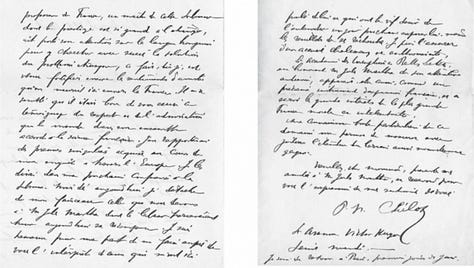





Albert Grenier agreed with Jules Martha's method: “I read [the tests] with the greatest care and with the desire to escape your reasoning, I must admit that I did not succeed and that until the end of what you gave me, I cannot help but follow you.”
But according to this article, “A few months later, on November 18, 1913, Albert Grenier asked Jules Martha for an interview to clarify the points he did not understand or on which he had some hesitations. He was indeed not convinced by the distinction between nominal roots terminated by a consonant and verbal roots terminated by a vowel, and above all did not find this fact in the Finno-Ugric languages.”
Again, “An end point to the debate was given by Dominique Anziani. In his article, just as critical as that of Robert Gauthiot although less aggressive, he also demonstrated the mistakes of Jules Martha and his lack of understanding of language techniques. Dominique Anziani accused him of using a method he called comparative, when it was an etymological method that he had used when comparing the roots of words and suffixes. He then recalled the real linguistic definitions of the methods evoked by Jules Martha in foreword: ‘as to the method that German scholars have called kombinatorische, and which all Etruscologists have actually joined for ten years, it uses combinations as the main but not unique process. He compares two or more inscriptions, where the same word appears, to roughly determine the value of this word. He compares two forms of a word, with or without a given suffix, then seeks to find the same suffix in other words, provided, however, that these other words are attested in their presumed simple form.’
Dominique Anziani was kind in his conclusion of Jules Martha's work, ‘Despite everything, it would be sovereignly unfair not to pay tribute to the colossal labor that represents Mr. Martha’s book. If he did not succeed, it was because he could not succeed, and one cannot defend oneself from some sadness by noting that years of work can lead to a complete failure. At least this example should not be lost for Etruscologists. They will now know that they have nothing to hope for from the comparison with the Finno-Ugric languages, or even comparison with other languages as long as these comparisons are not based on foundations which they have hitherto lacked.’
My conclusion based on the available information: Jules Martha’s book was published over a century ago and no advancements or demonstrations in the understanding or translating of the Etruscan or Phoenician languages have been made to prove they descended from other cultures, especially that of a Finnic one from Russia. The Phoenician alphabet is shown to correspond to the priestly system of sacred glyphs in Egypt, but I cannot vouch for the authenticity of those claims since not one historian notices the Rosetta stones at the time which they were claimed to have been created. In other words, the hieroglyphics may have been designed to correspond to the Phoenician and may be entirely of Greek or Roman origin. The Etruscan alphabet clearly corresponds to the Phoenician one. I disagree with Martha’s critics that root words aren’t significant in understanding language. Roots and radicals are oftentimes the keys to priestly mysteries involving names and language, especially when broken down through gematria. For example, the Egypto-Greek word and monogram of the sun, Phre (ΦΡΗ) and Hues (ΥΗΣ) respectively, both correspond to 608, the old value of the Neros in years. This lets the initiate know the deities are allegories for the same idea. The G functions like a Y in Greek (i.e. gyro is pronounced yuro), so gematria is pronounced yemma-tria. I bring this up because encoded in the word gematria is Tri-Stone (gemma-tria), Three-Stone, Troy-Stone, or all of those if you replace Stone with Lord, Master, or God. Even the Greek/Italian word for Troy (Troia, Three in One) is pronounced Tree-uh, since the oi functions like ee in Greek. The word gematria is a Trinity encode that I’ve never seen another human notice. However, the Greek & Hebrew gematria systems correspond to each other, and are modern inventions compared to the Etrusco-Phoenician. While one could make comparisons and ascribe what they know of the Hebrew letters’ numerical values to the Etrusco-Phoenician ones based on the Hebrew alphabet being taken from Phoenician, there are no artifacts to corroborate this (as far as I can tell; if I am wrong, please post corrections in the comments). The Hebrew language is like a modern version of Chaldean and Hebraists have failed to demonstrate its affinity to Phoenician. As things stand, there is no evidence that this priestly system of alphabets used by the Etrusco-Phoenicians originated in Finnic cultures. On the contrary, all archaeological finds paint a picture of it originating in Italy, if not somewhere else in the Mediterranean, and spreading to Scandinavia by way of Britain and the rivers from the Black Sea. Therefore, there is no evidence that the Etrusco-Phoenicians came from a Finnish culture as far as artifacts are concerned. If the Scandinavian phenotype does not originate in the north, then it comes from Central or Eastern Europe according to language and customs. If it is proven that the Scandinavian phenotype comes from Finland, and nowhere else, then it means that those Finnish people made their way to southern Europe long before the existence of the Etrusco-Phoenicians, who they subsequently became known as. However, as you can see in my article Early Etruscan Sites, it would’ve been a more primitive Finnish people settling in Italy rather than an advanced maritime one known as the Phoenicians. Special thanks to Dr. Longo (Old World Florida) and his guest for the conversation, as it strengthened my perspective on this subject. I’m looking forward to professional scholars correcting and contributing to this, as Truth is sovereign and it alone will stand forth once the lies are washed away.
I decided to make this article free for everyone. This took a few days of work to compile. My only request is that if you read it, you share it with your network and help me grow this platform. When more friends use your referral link to subscribe (free or paid), you’ll receive special benefits.
Get a 1 month comp for 3 referrals
Get a 3 month comp for 5 referrals
Get a 6 month comp for 25 referrals

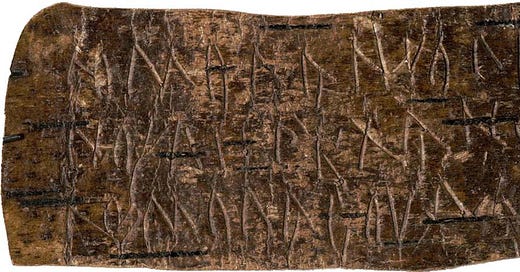





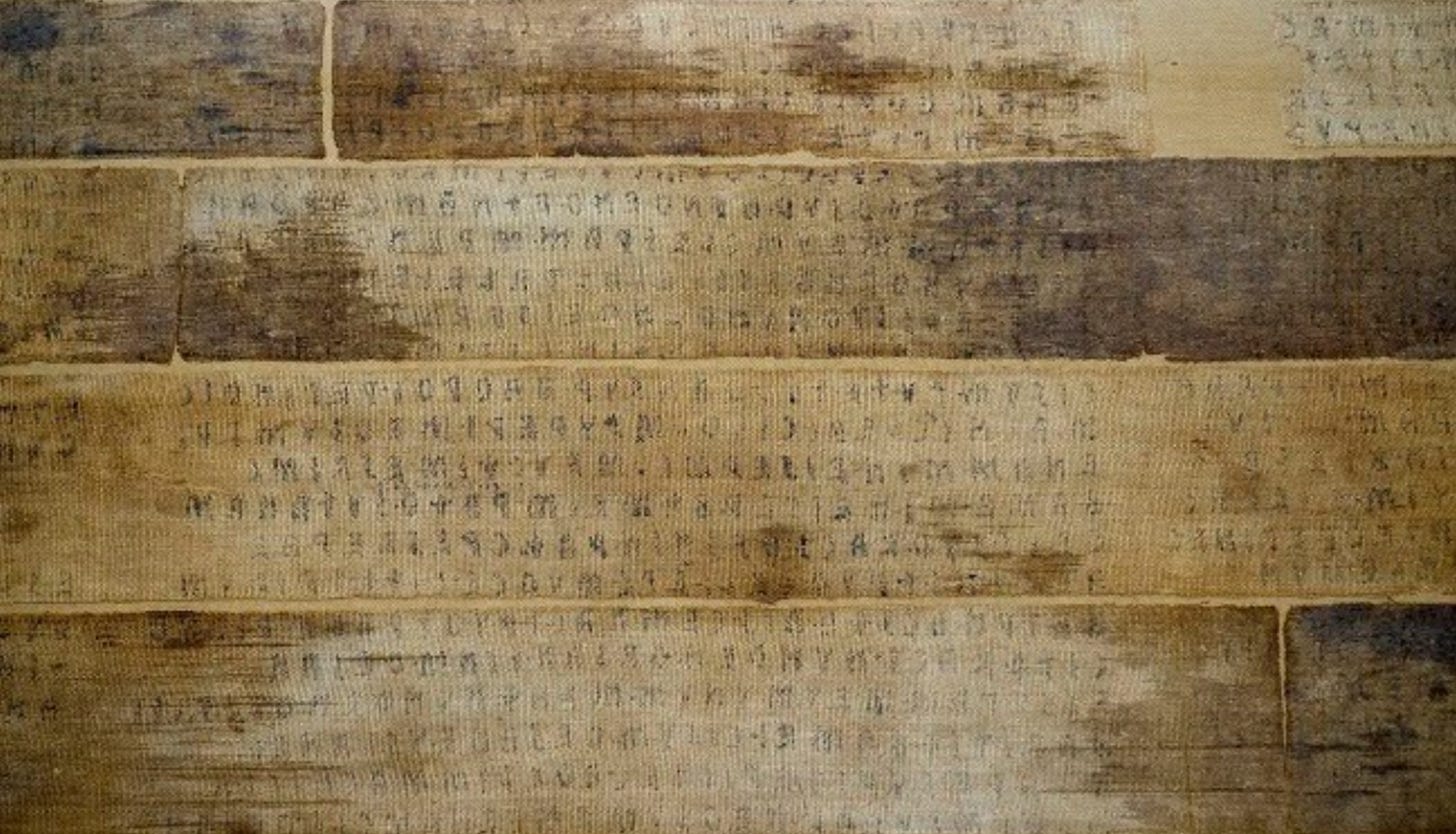



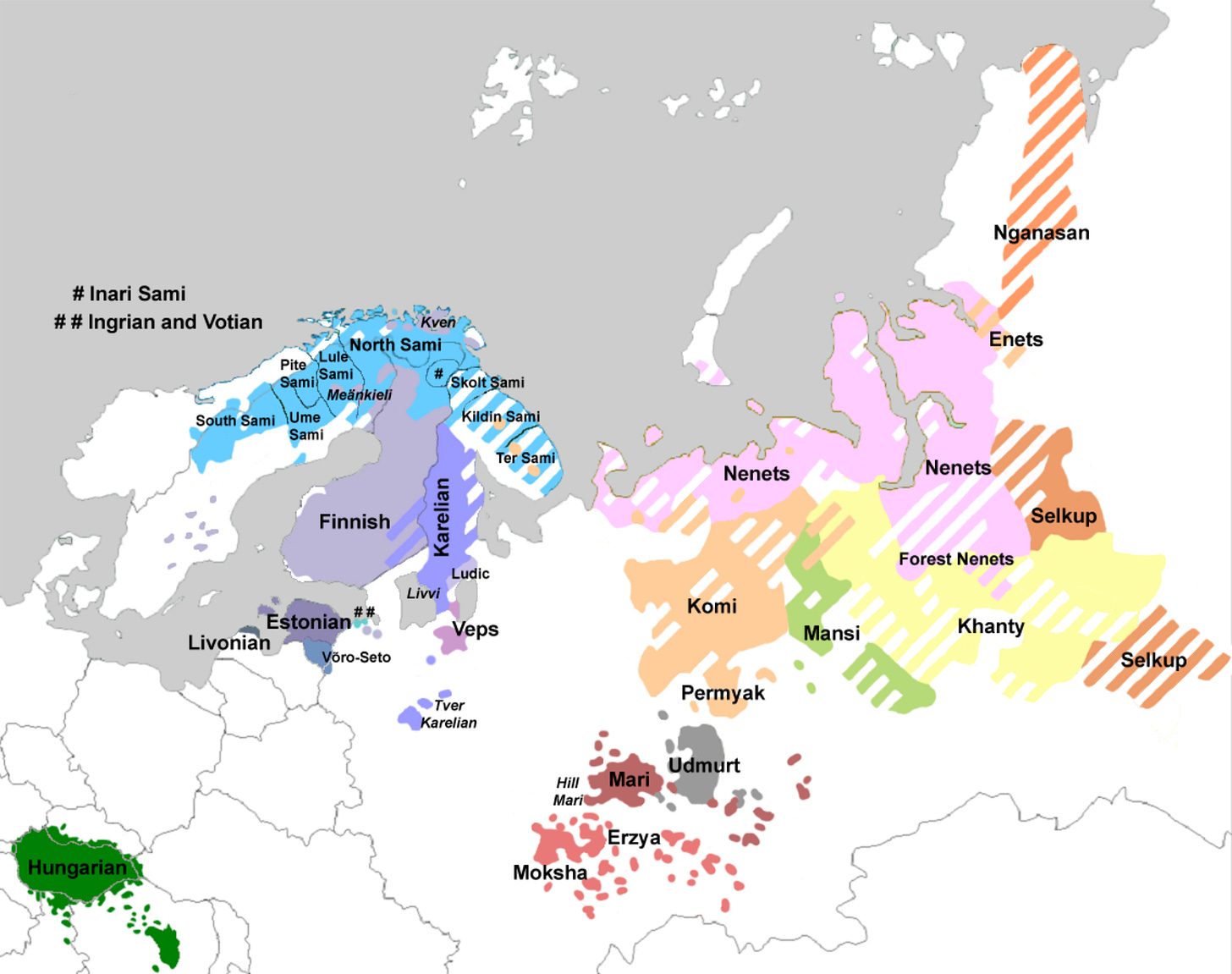






I wish I could paste a picture of a map to this. There is a map I saw recently that projected “men’s body/facial hair” percentages. If the map is accurate, the country or regions with the most abundant hair on men are Scandinavia and regions touching the Mediterranean Sea. Interestingly enough mainland Europe and the rest of the world has a lower percentage of hair on men. Central Africa, the americas, and regions in South Asia/Oceana have the lowest. I found this very interesting after watching the Dr Longo’s stream you are featured on.
Wow man great work, you are a true Champion!